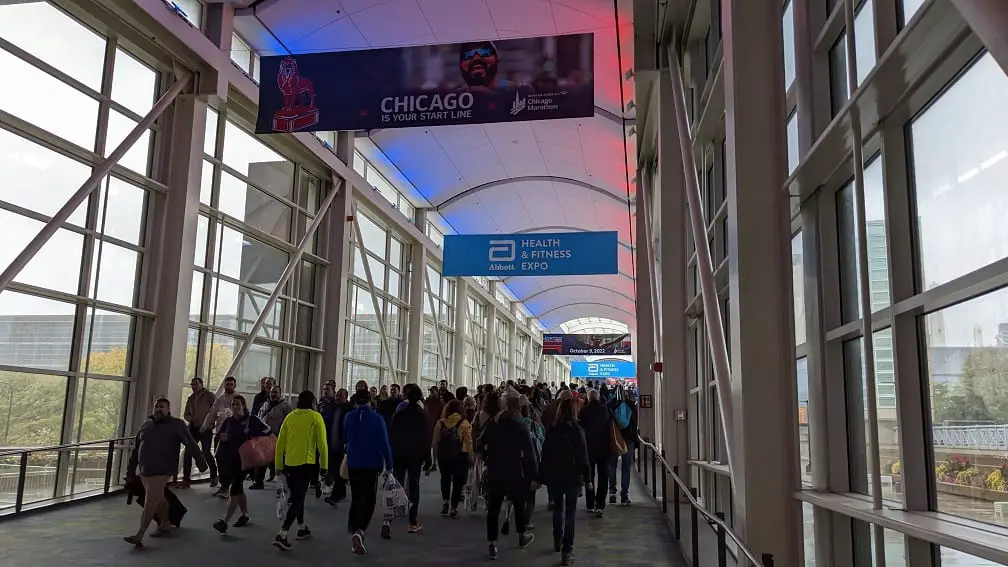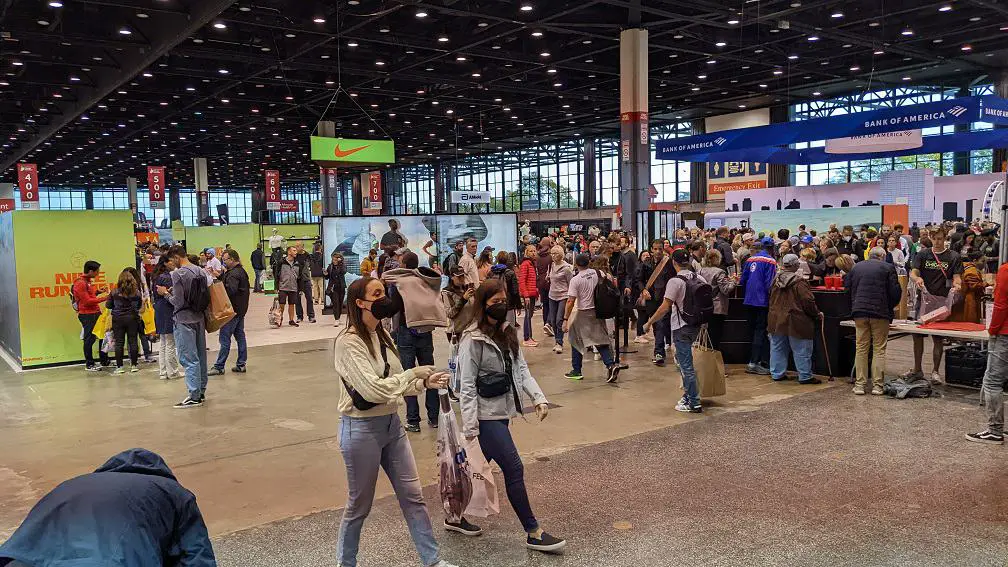One standard method of fueling is through the consumption of jelly beans or fruit chews. But why do marathon runners eat these sweet treats during their race?
Table of Contents
The Importance of Fueling During a Marathon
As a long-distance runner, I know firsthand how important it is to fuel my body during a marathon. But unfortunately, the human body can only store so much glycogen, the primary muscle fuel source, and it’s insufficient to power a full marathon.
This is why runners turn to other sources of carbohydrates, such as jelly beans or fruit chews, to keep their energy levels up during the race.
I typically consume a gel or a handful of jelly beans during a marathon. This helps maintain my blood sugar levels and gives me the energy to keep going.
Not all gels or chews are created equal, and it’s essential to find what works best for your body through trial and error during training.
When choosing a fuel source, it’s crucial to consider the amount of carbohydrates and electrolytes in each serving.
Most gels and chews contain around 20-30 grams of carbohydrates per serving, enough to provide a quick burst of energy without causing a sugar crash. Additionally, electrolytes such as sodium and potassium help to replenish what is lost through sweat and aid in hydration.
Staying hydrated during a marathon is essential, as dehydration can decrease performance and heat exhaustion. I drink water or an electrolyte drink at every aid station and carry a small water bottle to sip on between stations.
In conclusion, fueling during a marathon is essential to maintain energy levels and prevent hitting the dreaded “wall.” By choosing suitable fuel sources and staying hydrated, runners can power through the race and cross the finish line with a sense of accomplishment.
Why Jelly Beans and Fruit Chews are Popular Fuel Sources
During a marathon, runners must maintain their energy levels to avoid hitting the dreaded “wall.”
One way to achieve this is by consuming quick sources of carbohydrates, such as jelly beans and fruit chews. These treats are popular fuel sources for several reasons.
Firstly, jelly beans and fruit chews are easy to carry and consume during a race. They are small and lightweight, making them convenient for runners to carry in their pockets or hydration belts.
Additionally, they can be quickly consumed on the go without stopping or slowing down. Secondly, jelly beans and fruit chews provide a quick boost of energy.
They are high in carbohydrates, the primary fuel source for the body during exercise. Consuming them during a race can help replenish glycogen stores and provide energy to help runners power through the last few miles.
Thirdly, jelly beans and fruit chews come in various flavors, which can help prevent flavor fatigue.
Eating the same gel or sports drink flavor for hours can become tiresome, but runners can switch up the flavors with jelly beans and fruit chews to keep their taste buds engaged.
Overall, jelly beans and fruit chews are popular fuel sources for marathon runners because they are easy to carry and consume, provide a quick energy boost, and come in various flavors.
However, it’s important to note that not all runners may find them compelling or appealing, and it’s essential to experiment with different fuel sources during training to find what works best for each individual.
The Science Behind Jelly Beans and Fruit Chews as Fuel
When running a marathon, it’s crucial to maintain energy levels to avoid hitting the wall. This is where jelly beans and fruit chews become a convenient and effective fuel source.
But why exactly do runners choose these sweet treats over other options?
Jelly beans and fruit chews are popular among runners because they provide a quick source of carbohydrates that are easily digested and absorbed by the body. During exercise, the body primarily relies on carbohydrates for energy, and consuming these sugary snacks can help replenish glycogen stores and delay fatigue.
Additionally, jelly beans and fruit chews are designed to be portable and easy to consume on the go. They can be carried in a pocket or running belt and eaten without utensils or preparation. But not all jelly beans and fruit chews are created equal.
It’s essential to choose products specifically designed for endurance athletes and containing a mix of carbohydrate sources, such as glucose and fructose, for optimal energy delivery.
Some popular jelly beans and fruit chews for runners include Jelly Belly Sport Beans, Honey Stinger Chews, and Clif Bloks.
These products are formulated with the needs of endurance athletes in mind and often contain additional electrolytes and vitamins to support performance. Overall, jelly beans and fruit chews can be a convenient and effective fuel source for marathon runners.
However, choosing high-quality products and consuming them in moderation is essential to avoid digestive issues and ensure optimal performance.
How to Properly Incorporate Jelly Beans and Fruit Chews into Your Marathon Fueling Strategy
These small, bite-sized snacks are easy to carry and consume on the go, making them a convenient option for long-distance races.
Here are a few tips on adequately incorporating jelly beans and fruit chews into your marathon fueling strategy: First, it’s important to remember that not all jelly beans and fruit chews are created equal.
Some brands may contain more sugar or artificial ingredients than others, so read the labels and choose a product that aligns with your dietary preferences and needs.
Next, consider the timing of your fueling.
Most runners aim to consume 30-60 grams of carbohydrates per hour during a marathon, which can be achieved through gels, sports drinks, and solid foods like jelly beans and fruit chews.
Plan to take your first snack 45 minutes to an hour into the race and continue fueling every 30-45 minutes afterward.
When consuming jelly beans and fruit chews, wash them thoroughly with water or a sports drink to aid digestion. It’s also a good idea to practice fueling with these snacks during your training runs to determine how your body responds and to avoid any potential stomach issues on race day.
Finally, don’t rely solely on jelly beans and fruit chews for your marathon fueling. These snacks should be used with other fueling methods to ensure a balanced mix of carbohydrates, electrolytes, and fluids.
Experiment with different fueling strategies during your training to find what works best for you.
Incorporating jelly beans and fruit chews into your marathon fueling strategy can be a smart choice for many runners.
Just be sure to choose high-quality products, time your fueling appropriately, and use these snacks with other fueling methods to optimize your performance on race day.

Alternative Fuel Sources for Marathon Runners
Many runners fueling during a marathon rely on energy gels or jelly sweets. However, these options may only be suitable for some. Here are some alternative fuel sources that I have found helpful during my races:
Dried Fruit
Dried fruit, such as apricots, dates, and raisins, are a great source of natural sugars and carbohydrates. In addition, they are easy to carry and provide a quick energy boost without causing stomach discomfort.
Potatoes
Potatoes are a surprising but effective source of fuel for marathon runners. They are high in carbohydrates and potassium, which can help prevent cramping. Try boiling or baking small potatoes and packing them in a plastic bag for easy consumption during the race.
Peanut Butter and Honey Sandwiches
Peanut butter and honey sandwiches are a tasty and portable option for marathon fuel. They provide a mix of carbohydrates, protein, and healthy fats, which can help sustain energy levels throughout the race.
Sports Drinks
Sports drinks like Gatorade or Powerade are designed to provide hydration and energy during exercise. They contain electrolytes and carbohydrates, which can help prevent dehydration and maintain energy levels.
However, choose a sports drink that works well with your stomach and doesn’t cause any GI distress.
Coconut Water
Coconut water is a natural source of electrolytes and carbohydrates. It can help prevent dehydration and provide a quick energy boost.
However, choose a brand that doesn’t contain added sugars or artificial flavors. In summary, there are many alternative fuel sources for marathon runners beyond energy gels and jelly sweets.
Experiment with different options during training runs to find what works best for you. Stay hydrated and fueled regularly to maintain energy levels throughout the race.

Final Thoughts
As a marathon runner, I can attest to the benefits of consuming jelly beans or fruit chews during a race. These small, portable snacks are easy to replenish carbohydrates and quickly boost energy.
While many options are available on the market, finding what works best for you is essential. Some runners prefer gels or bars, while others find that jelly beans or chews are easier to digest.
Experimenting with different flavors and brands is crucial to find what tastes good and sits well in your stomach.
It’s important to note that consuming jelly beans or fruit chews alone won’t guarantee a successful race. Proper training, hydration, and nutrition leading up to the event are all crucial factors in performing well.
Additionally, it’s essential to follow the recommended guidelines for carbohydrate intake during a race.
Aim for 30-60 grams of carbs per hour for races lasting less than 2.5 hours and up to 90 grams per hour for longer races.
Overall, incorporating jelly beans or fruit chews into your race day nutrition plan can be a helpful tool in achieving your goals.
As with any aspect of marathon training, listening to your body and adjusting as needed is essential.

